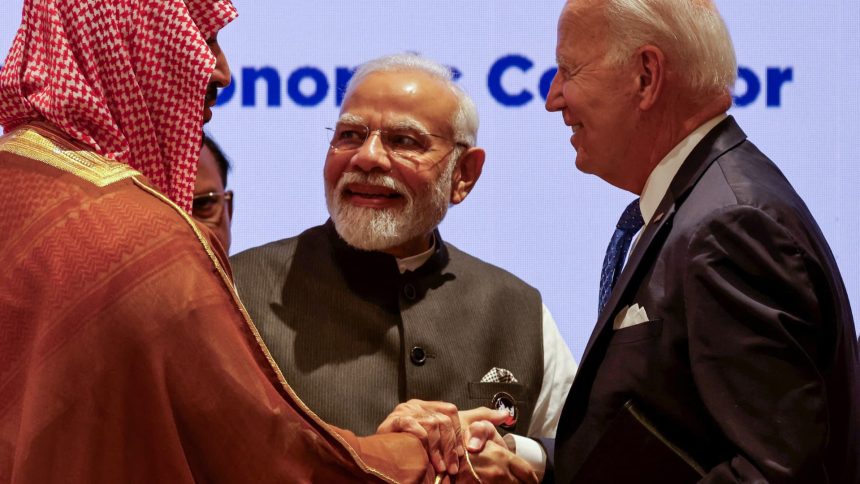NEW DELHI — Even for those accustomed to the ebbs and flows of the U.S.-Saudi Arabia relationship, the sight of President Joe Biden extending a handshake to Saudi Crown Prince Mohammad bin Salman at the recent G20 leaders’ summit in New Delhi was quite the turnaround.
After all, Biden had warned last October of “consequences” after the Saudi-led oil cartel OPEC decided to cut crude production and boost prices amid Russia’s war in Ukraine.
Roughly a year on, Saudi Arabia is not only one of six new invitees to the China-dominated BRICS coalition, but also a signatory to the Biden-led pact for a ship-to-rail economic corridor linking India with Middle Eastern and European Union countries unveiled on the sidelines of the G20 summit — framed as a counter to China’s decade-old Belt and Road Initiative.
Saudi Arabia’s double dipping underscores the range of economic and strategic opportunities that abound for the various economies caught between the dueling U.S. and China as they build their own alliances and spheres of influence. U.S. and other major Western nations have been keen to “de-risk” their economic — and not decouple — from China on grounds of national security.
This is also consequently leading to a fragmentation of the world’s economy as protectionism and nationalism impede global trade, while giving rise to a complex matrix of relationships in a multipolar world that are not always straightforward as nations pursue their self interests.
“We aren’t heading toward a BRICS vs G7 world,” Ian Bremmer, founder and president of political risk consultancy Eurasia Group, wrote in a note last Monday. G7 refers to the Group of Seven advanced industrialized economies, while BRICS refers to a group of leading developing economies — both are sub-groups within the G20.
“China scored a significant victory at the BRICS summit, securing the invitations of six additional countries to join the group — despite significant concerns from Brazil, India, and South Africa,” he said.
“But almost all the BRICS+ oppose the idea of a China-led organization and don’t want BRICS membership to constrain their existing — and in most cases growing — diplomatic and economic ties with G7 members,” Bremmer said.
Risk of exclusion
In fact, the greater risk and opportunity cost may now be from any exclusion.
“We say there is no corridor without Turkey,” Turkish President Recep Tayyip Erdoğan reportedly told reporters on the sidelines of the G20 leaders’ summit in Delhi — after it emerged his country was excluded from the Biden-backed new economic corridor.
The attraction, particularly for the world’s developing economies, is the promise of investment that would plug infrastructure gaps in low- and middle-income nations. This would in turn secure regional supply chains, boost trade connectivity and economic activity — all similar to objectives underpinning China’s Belt and Road Initiative, a global infrastructure investment strategy that Beijing launched in 2013.
“The problem with ‘counter (China’s Belt and Road Initiative)’ is that it is a U.S. narrative, while local narratives are nearly always about multiplication/addition, not subtraction,” Evan Feigenbaum, a former U.S. diplomat and currently vice-president for studies at the Carnegie Endowment for International Peace, said on X, formerly Twitter.
This Biden-led initiative will comprise of two separate corridors, the east corridor connecting India to the Middle East and the northern corridor connecting the Middle East to Europe. It will include a railway that will supplement existing cross-border maritime and road transport routes between India, the UAE, Saudi Arabia, Jordan, Israel, and Europe.
“This is a big deal. This is a real big deal,” Biden said in Delhi at the launch.
Biden also announced a partnership with the European Union in a new greenfield rail line expansion to develop the Lobito Corridor connecting the southern part of the Democratic Republic of the Congo and northwestern Zambia to regional and global trade markets via the port of Lobito in Angola.
Middle East influence
China’s BRI offers a glimpse into Biden’s ambition and perhaps what his infrastructure pact will come up against.
Since its launch 10 years ago, Beijing’s BRI now counts 148 countries as partners, according to a tally by Fudan University in Shanghai. The BRI is likely to boost world GDP by $7.1 trillion per annum by 2040, according to a 2019 study by the independent Center for Economics and Business Research in London.
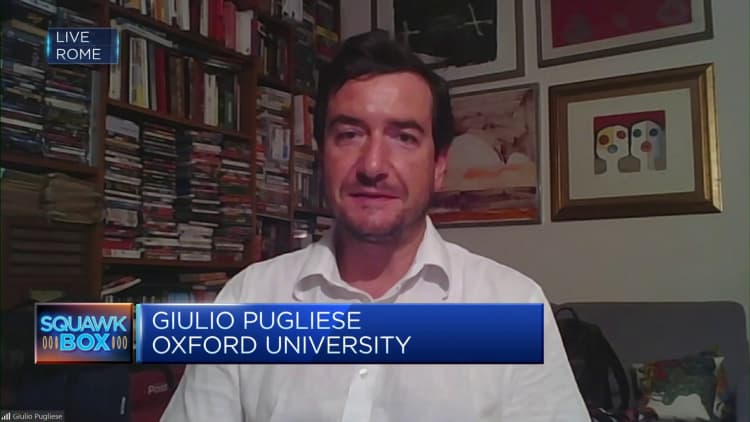
The value of acquisitions and investments by Gulf companies in China in on track for its best ever, having already climbed more than 1,000% year-on-year to $5.3 billion, according to data compiled by Bloomberg.
China’s growing involvement in political and security issues is testament of this growing clout with its Gulf partners. The Saudi-Iran normalization agreement, for example, was brokered in Beijing.
Biden’s infrastructure pact cutting through the heart of the Middle East is one way the U.S. is attempting to reboot its influence in the region again.
Debt risks
Even then, China’s 10-year head start offers some cautionary lessons for Biden’s global infrastructure pact.
BRI deals between China and various partner countries typically involve a set of loans either with multilateral banks, that Beijing exerts heavy influence on, or with Chinese state or policy banks at about 4-5% interest rates — which is typically higher than the IMF, where loans are sometimes extended to low-income countries at zero percent.
BRI deals also usually include construction and equipment by Chinese companies, which are mostly state-owned.
“Debt issues aside, large-scale infrastructure projects tend to be high risk. Moreover, returns tend to get realized in the longer term and may not even accrue to the original investor,” said Chong Ja Ian, an associate professor in political science at the National University of Singapore.
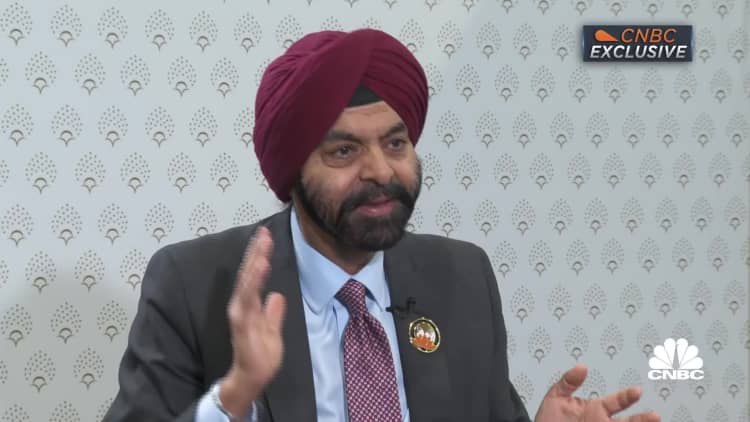
“Hence, it is usually public monies that fund large-scale infrastructure, since they make less commercial sense for private firms concerned with profits as well as quarterly or even annual results,” he added. “This is especially the case for the projects the PRC [People’s Republic of China] invested in as part of the BRI. The lack of investment previously had to do with weak commercial cases for investment.”
According to New York-based consultancy Rhodium Group, about $78.5 billion of loans issued by Chinese institutions to fund infrastructure projects around the world were renegotiated or written off between 2020 and the end of March this year.
The International Monetary Fund and the World Bank have been involved in some of these negotiations, pointing to a marginal shift to China’s willingness to involve multilateral banks in debt restructuring negotiations.
“25% of debt of emerging markets is treading in distressed territory,” IMF’s Managing Director Kristalina Georgieva told CNBC on the sidelines of the Delhi G20 leaders’ summit.
Strategic alternative
The issue has gotten serious enough that U.S. Treasury Secretary Janet Yellen ranked it high on her agenda with her Chinese counterparts on her visit to Beijing in July and again at this G20 meeting in Delhi.
“I guess you can say that Washington and Delhi are trying to present an alternative,” Chong said.
“The corridor seems more focused on linking existing ports and railway lines, supplemented by energy grids and telecommunications cables,” he added. “This appears to be a lower risk approach and may even make use of infrastructure already paid for and built under the auspices of the BRI.”
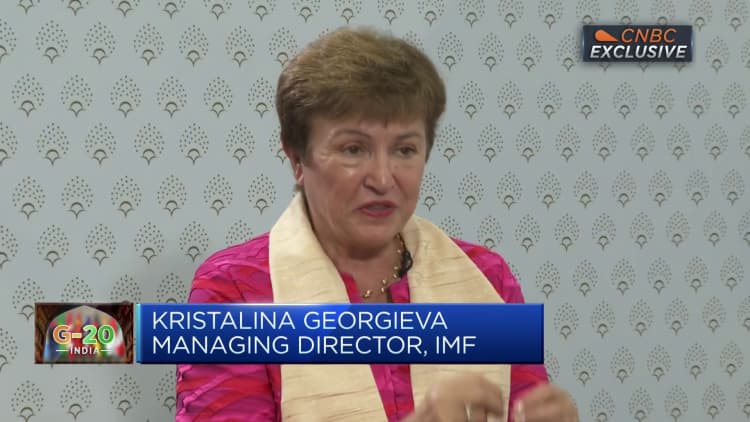
More details of Biden’s India-Middle East-Europe infrastructure plan will be made available after participating countries meet, but his plan is already seen as a smart maneuver around the increasingly nationalistic sentiment that is limiting more trade liberalization in the U.S.
“Many states would like access to the U.S. market, but U.S. domestic politics seems to make such developments more difficult at the present time,” Chong, the NUS associate professor, said.
“Stressing connectivity and investment is a way for the United States to overcome the challenges it currently faces domestically with trade liberalization,” he added.
Rise of the middle powers
In the meantime, Biden’s workaround and building of a coalition of allies are giving India Prime Minister Narendra Modi the room to fashion itself as the leader of the developing world, choosing the term “Global South” as his choice reference.
In a banner year for Indian diplomacy that also saw the world’s most populous nation take on the rotating presidency of Shanghai Cooperation Organization, Modi took the opportunity to turn the normally sedate rotating G20 presidency into a branding vehicle to burnish India as a key global player advocating the interests of the Global South, while serving as an interlocutor with the developed nations.
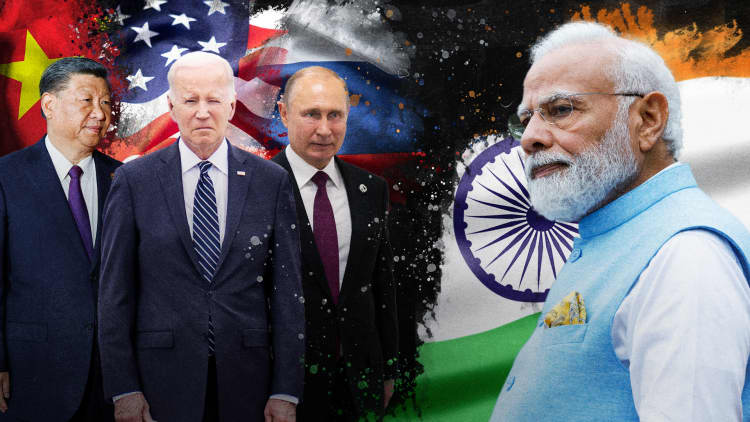
“In part that’s a response to most countries in [G20] being upset at the United States (and to varying degrees, the broader West) over unilateralism and lack of equity in policy in the economic, pandemic, climate, and security spheres,” Eurasia Group’s Bremmer said.
He added many nations are also upset with China over “diminished expectations in Belt and Road and an overly transactional and aggressive approach toward commercial leverage.”
The unexpected consensus at the G20 leaders’ summit, along with Modi co-fronting the launch of Biden’s global infrastructure initiative in Delhi, underscore the growing partnership between India and the U.S. in the latter’s broader Indo-Pacific strategy to contain China.
Yet despite the overt calls toward “One Earth, One Family, One Future” at the Delhi summit, the reality is a more fragmented one as supply chains are aligning along shifting global geopolitical lines — when the desired outcome for greater prosperity for all would involve a greater collaboration.
“In a world where we learned from Covid and the [Ukraine] war, that supply chains need to be reinforced, they need to be diversified, that connectivity matters tremendously,” IMF’s Georgieva told CNBC.
“What is important is to do it for the benefit of everybody, and not for exclusion of others,” she said. “In that sense, I would encourage all countries working collaboratively with each other to do so in the spirit of integrated economy.”
Read the full article here


